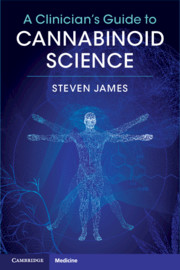Book contents
- A Clinician’s Guide to Cannabinoid Science
- Reviews
- A Clinician’s Guide to Cannabinoid Science
- Copyright page
- Dedication
- Contents
- Preface
- Section 1 An Introduction to Cannabinoid Science
- Section 2 Potential Therapeutic Uses of Cannabinoids in Clinical Practice
- Chapter 6 Cannabinoids and Pain
- Chapter 7 Cannabinoids and Neuropsychiatry
- Chapter 8 Cannabinoids in Sleep and Circadian Rhythms
- Chapter 9 Cannabinoids and Inflammation and Autoimmune Disorders
- Chapter 10 Cannabinoids and the Eye
- Chapter 11 Cannabinoids and the Skin
- Index
- References
Chapter 9 - Cannabinoids and Inflammation and Autoimmune Disorders
from Section 2 - Potential Therapeutic Uses of Cannabinoids in Clinical Practice
Published online by Cambridge University Press: 12 October 2020
- A Clinician’s Guide to Cannabinoid Science
- Reviews
- A Clinician’s Guide to Cannabinoid Science
- Copyright page
- Dedication
- Contents
- Preface
- Section 1 An Introduction to Cannabinoid Science
- Section 2 Potential Therapeutic Uses of Cannabinoids in Clinical Practice
- Chapter 6 Cannabinoids and Pain
- Chapter 7 Cannabinoids and Neuropsychiatry
- Chapter 8 Cannabinoids in Sleep and Circadian Rhythms
- Chapter 9 Cannabinoids and Inflammation and Autoimmune Disorders
- Chapter 10 Cannabinoids and the Eye
- Chapter 11 Cannabinoids and the Skin
- Index
- References
Summary
The immune system is a complex system and an essential function critical for good health and survival. Cannabinoid-based treatments hold great promise for future therapeutic uses although our clinical knowledge remains very limited. In this chapter we will review selected preclinical and clinical information that may provide the clinician some insight about the future development of cannabinoids to treat immune diseases. Patients are constantly aware through the internet of numerous anecdotal reports and promotional claims about cannabinoids as remedies and appropriately ask their doctor about recommendations. In such situations the clinician should be aware that the US Food and Drug Administration (FDA), Canada Health and the European Medicines Agency (EMA) have yet to approve any cannabinoid for use in the treatment of immune-related illness.
- Type
- Chapter
- Information
- A Clinician's Guide to Cannabinoid Science , pp. 113 - 124Publisher: Cambridge University PressPrint publication year: 2020



